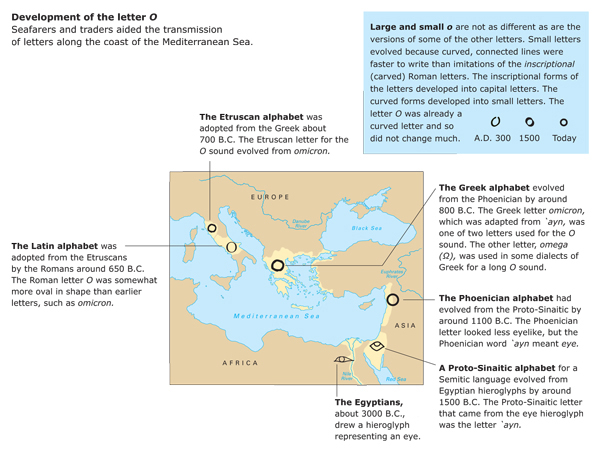O is the 15th letter of the alphabet used for the modern English language. The letter O is also used in a number of other languages, including French, German, and Spanish.

The letter O is the fourth of the English vowel letters (see Vowel ). The letter has several sounds in English. The sound in cot is a short O, and the sound in book is a short OO (double O). The sound in November is a long O and the sound in loose is the long OO sound. In some English words in which the letter appears in pairs, each O is pronounced separately, as in the word cooperate. These words are sometimes spelled with a hyphen, as co-operate, for example.
Scholars believe the letter O evolved from an Egyptian hieroglyph (pictorial symbol) that represented an eye. Hieroglyphs were adapted to be used for a Semitic language by around 1500 B.C. The alphabet for this Semitic language—the earliest known alphabet—is called Proto-Sinaitic. By 1100 B.C., an alphabet for another Semitic language, Phoenician, had evolved from Proto-Sinaitic. See Semitic languages .
The Phoenician letter that can be traced to the Egyptian eye hieroglyph is the 16th letter of the Phoenician alphabet, `ayn, the Phoenician word for eye. The Phoenicians used the letter to represent a gargling sound that is not used as a speech sound in English. This sound also was not used in ancient Greek. So, around 800 B.C., when the Greeks adapted the Phoenician alphabet, `ayn became omicron.
The Etruscans adopted the Greek alphabet about 700 B.C. Although they had no O sound in their language, the Etruscans kept letters for which they had no need. By around 650 B.C., the Romans adopted the alphabet from the Etruscans. The Romans used the letter evolved from omicron for their O sound.

See also Alphabet .
